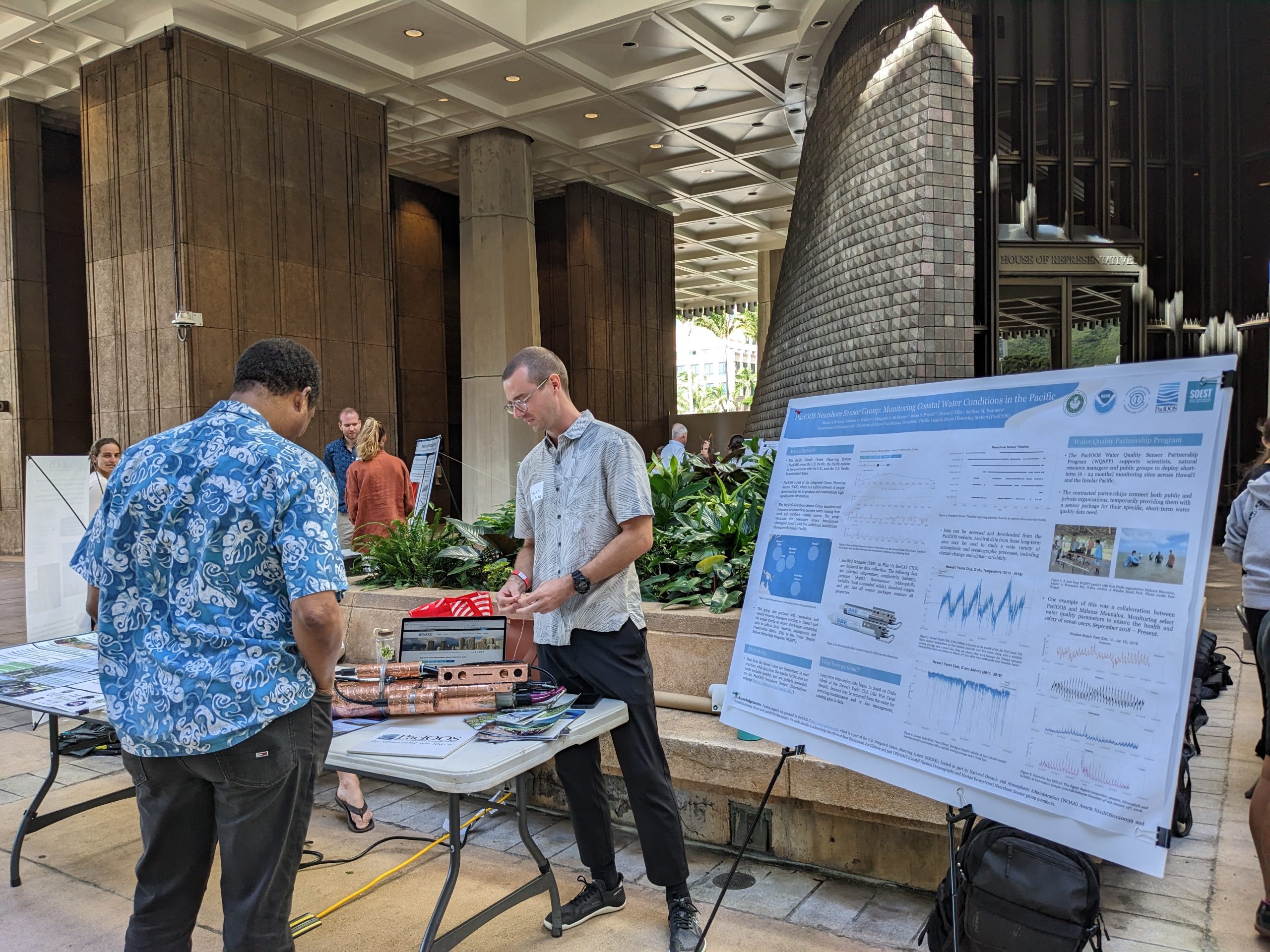

Vog mapping and predication, assessing groundwater resources and monitoring coastal water conditions were some of the SOEST research projects showcased at the Mānoa Research Day by University of Hawaiʻi at Mānoa. More than 100 undergraduate and graduate students, faculty, researchers and staff across 40 disciplines at UH participated in the event at the Hawaiʻi State Capitol on February 7.
“We’ve had legislators come to visit the campus a number of times, but what we wanted to do was bring the research to the Capitol, to their home turf, so that they can see the broad scope of all that we do,” said Christopher Sabine, UH Mānoa vice provost for research and scholarship.
UH Mānoa is consistently ranked among the top 2% of universities worldwide and is one of 146 institutions out of nearly 4,000, classified as “R1: Doctoral Universities – Very high research activity” in the Carnegie Classification of Institutions of Higher Education. UH’s flagship campus also brought in $366 million of the UH’s record high $505 million in extramural funding (external investments from the federal government, industry and non-profit organizations).
Hawaiʻi lawmakers, staff, and visitors who just happened to be at the Capitol learned about the wide variety research being conducted at UH Mānoa at informational tables, demonstrations and interactive activities on the Capitol’s rotunda and fourth floor.
“Research Day at the capitol was a great opportunity to talk with our local Representatives, Senators, and their staffers about the work we do at HIGP,” said Amber Imai-Hong, Avionics Engineer with the Hawai‘i Space Flight Laboratory in the Hawai‘i Institute of Geophysics and Planetology (HIGP). “It was interesting to hear their concerns as well as to see the interest they have in the outreach and research we are doing.”
Other SOEST exhibits featured battery storage technology and renewable energy production, cloud cover predictions to maximize solar energy production, research on Hawaiian volcanoes, wave buoys, climate modeling efforts, and Hawaii Sea Grant’s initiatives to support resource sustainability and community resilience.
“The biggest window of opportunity for social economic advancement is education and Mānoa is doing a fantastic job, and we can see all the intellectual grist that is around us,” said Gene Ward, Hawaiʻi State representative.
UH Mānoa is one of only four U.S. universities with the simultaneous designation as a land, sea, space, and sun grant institution. UH researchers highlighted the innovative research that leverages our unique Pacific-Asia location and faculty expertise in strategic areas with local and global impacts.
Original article written by Marcie Grabowski for SOEST News.